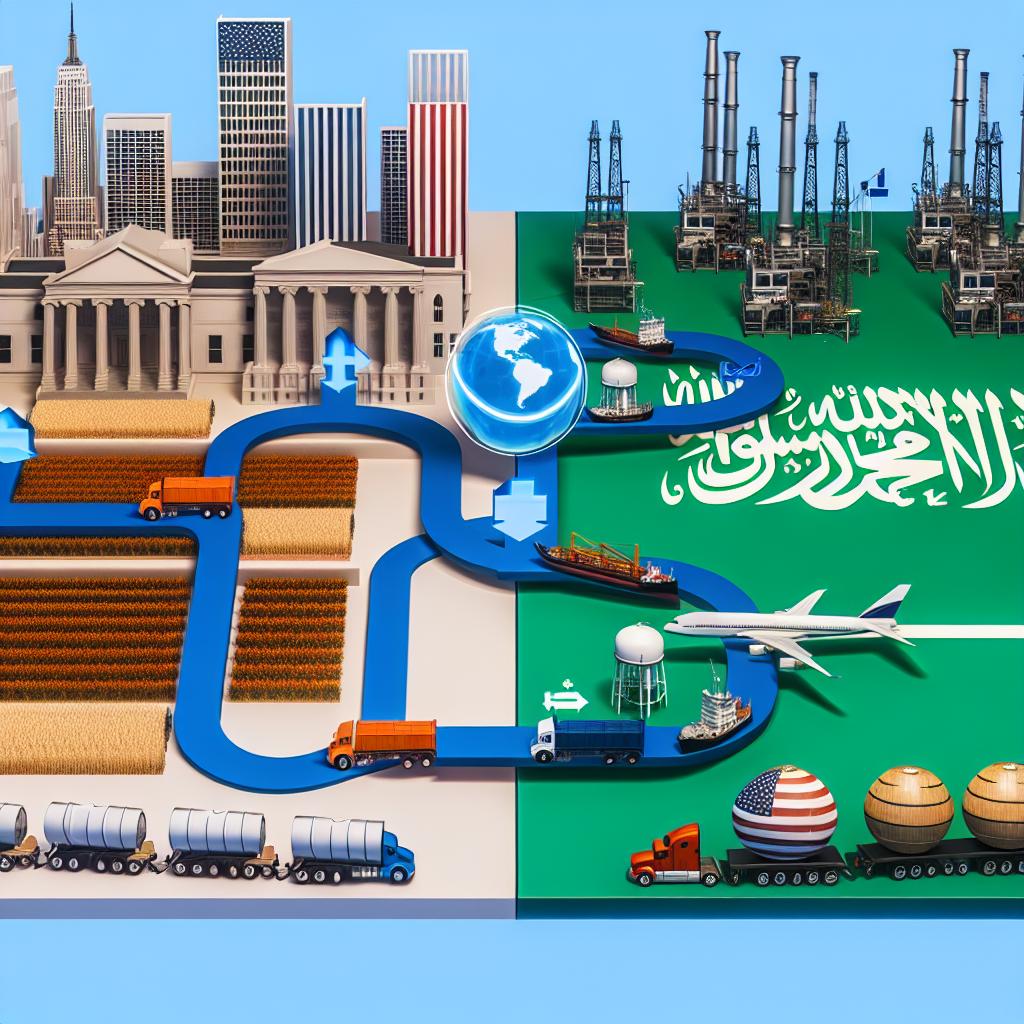Overview of Saudi Arabia’s Giga Projects
Saudi Arabia has embarked on an ambitious plan to diversify its economy and reduce its dependency on oil. This initiative, known as Vision 2030, is marked by the development of several “giga projects” that aim to transform various parts of the country through significant investments in infrastructure, entertainment, and energy. These projects are attracting international attention and partnerships, particularly from the United States.
These giga projects represent an unprecedented effort to reshape the Saudi economy and enhance its global role. By focusing on industries beyond oil, Saudi Arabia aspires to create new opportunities for its citizens and promote sustainable growth. The scale and scope of these projects are significant, involving large-scale investments that promise to transform landscapes, create jobs, and drive technological advancements.
The Appeal to US Companies
Saudi Arabia’s giga projects offer a range of opportunities for U.S. companies. These projects span various industries, including real estate, technology, tourism, and renewable energy. U.S. companies are keen to collaborate due to Saudi Arabia’s emphasis on modern technology and sustainability, as well as the potential for financial returns from substantial investments.
Technological Advancement: U.S. companies specializing in technology can offer expertise in building smart cities and digital infrastructure. Saudi Arabia is particularly interested in developing projects like NEOM, a proposed $500 billion smart city designed to showcase the latest in technology and sustainable living. This presents an excellent opportunity for American firms to provide cutting-edge solutions and establish a presence in the region.
Renewable Energy: As part of its vision, Saudi Arabia is investing in renewable energy. The country aims to harness the power of the sun and wind, reducing its carbon footprint while creating a new energy economy. Projects such as the King Salman Renewable Energy Initiative provide opportunities for American companies to participate in the development of solar and wind power infrastructure. By collaborating on these projects, U.S. firms can contribute to global sustainability efforts while benefiting from new markets.
In addition to these key areas, there are numerous other sectors where U.S. companies can engage. These include education, healthcare, and finance, each of which plays a vital role in the kingdom’s comprehensive development strategy.
Key Partnerships and Collaborations
Several U.S. companies have already begun collaborating with Saudi Arabia on large-scale initiatives. These collaborations highlight the mutual benefits for both Saudi Arabia and its international partners.
Boeing and Saudi Arabia have cultivated advanced partnerships in the aerospace sector, concentrating on both defense and commercial aviation. This partnership aligns with Saudi Arabia’s goals of enhancing its defense capabilities and expanding its aviation sector. Through such collaborations, U.S. aerospace firms can gain access to new markets and play a part in strengthening a major industry’s infrastructure.
Similarly, in the entertainment industry, U.S. major studio AMC Entertainment Holdings has played an essential role in establishing a modern cinema infrastructure in Saudi Arabia. By doing so, AMC supports the country’s aim to boost both local and international tourism. This partnership serves as a template for how entertainment and cultural exchange can benefit both parties and facilitate further economic development.
These collaborations demonstrate the potential for mutually beneficial relationships that extend beyond economic interests. By working together, Saudi Arabian entities and U.S. companies can foster innovation and cultural exchange, strengthening ties between the two nations.
Challenges to Consider
While these projects present numerous advantages, there are also challenges and potential risks for U.S. companies. Navigating the regulatory environment, understanding cultural differences, and managing political considerations are crucial for the success of these ventures.
Navigating Regulation and Policy
U.S. companies must carefully navigate Saudi Arabia’s regulatory framework. It is important to engage with local partners who can provide guidance and support in adhering to these regulations. Understanding local laws, compliance requirements, and business practices is essential to overcoming potential barriers to entry.
Adapting to cultural differences is another significant aspect of establishing successful partnerships. Companies need to invest in cultural training and establish strong local relationships to navigate the Saudi market effectively. By doing so, they can build trust and create long-lasting partnerships that respect local customs and contribute to mutual understanding.
U.S. firms must also be prepared to manage the political landscape. Understanding Saudi Arabia’s geopolitical context and aligning business strategies accordingly can minimize risks and ensure alignment with national priorities.
These elements underline the importance of preparation and adaptability when engaging in Saudi Arabia’s ambitious projects. By considering these factors, U.S. companies can position themselves for success and effectively contribute to the kingdom’s Vision 2030.
Conclusion
Saudi Arabia’s giga projects represent an immense opportunity for transformation and growth. By diversifying its economy through investments in infrastructure, technology, and renewable energy, the kingdom aims to secure a prosperous and sustainable future. For U.S. companies, the chance to collaborate on these projects offers both economic benefits and the potential to foster stronger international relations.
Ultimately, Vision 2030 is more than just a development plan; it is a blueprint for change that seeks to reshape Saudi Arabia’s role on the global stage. As these projects continue to progress, they will not only benefit Saudi Arabia but also provide global partners with opportunities to innovate, collaborate, and grow. For more detailed information about these projects, interested parties can visit the official Vision 2030 website for updates and detailed reports.
This article was last updated on: July 13, 2025




